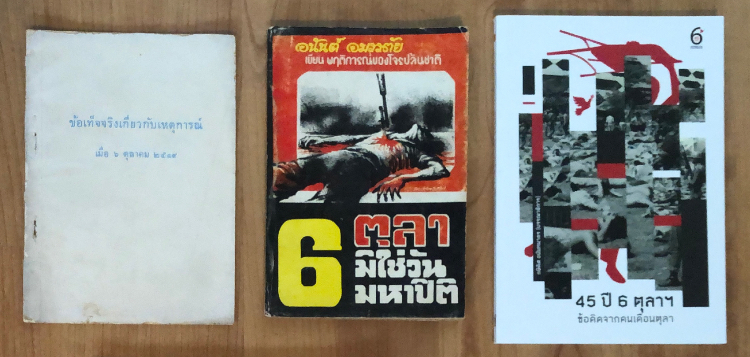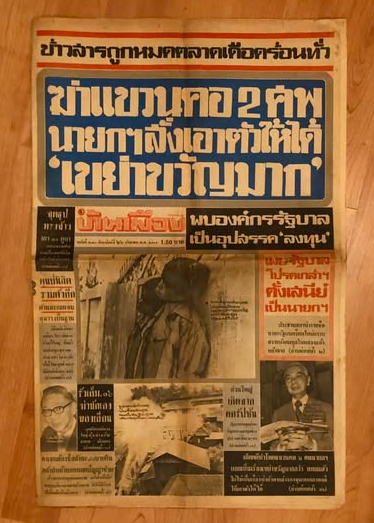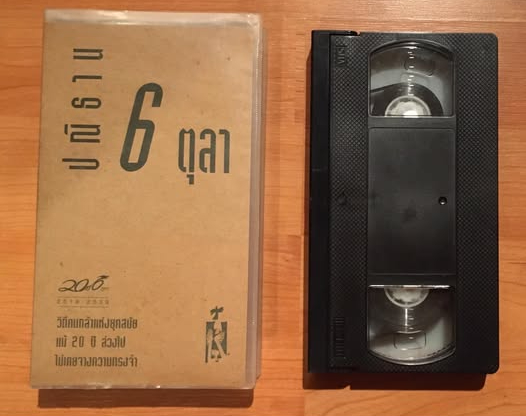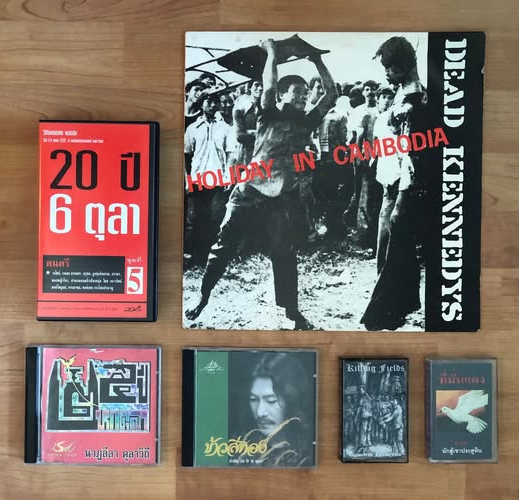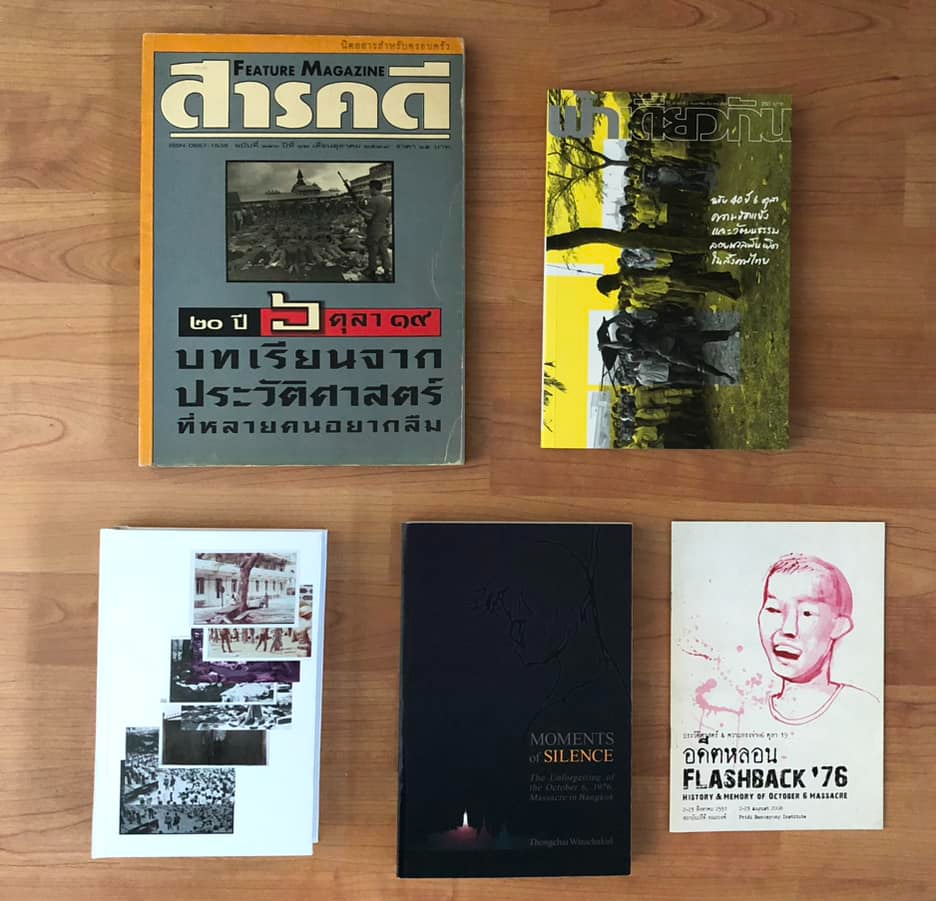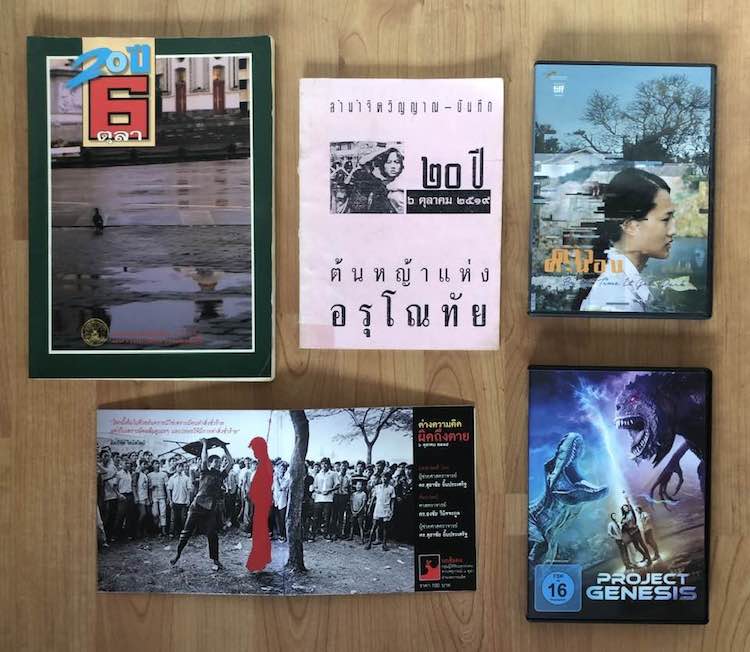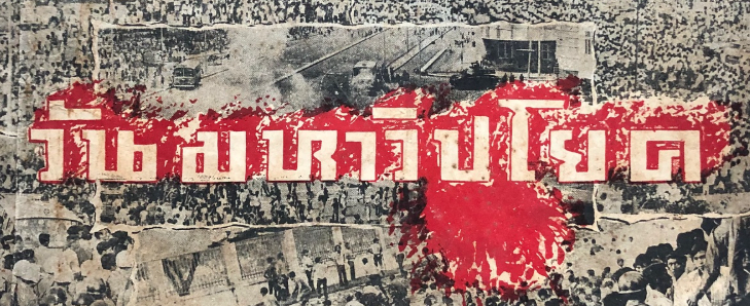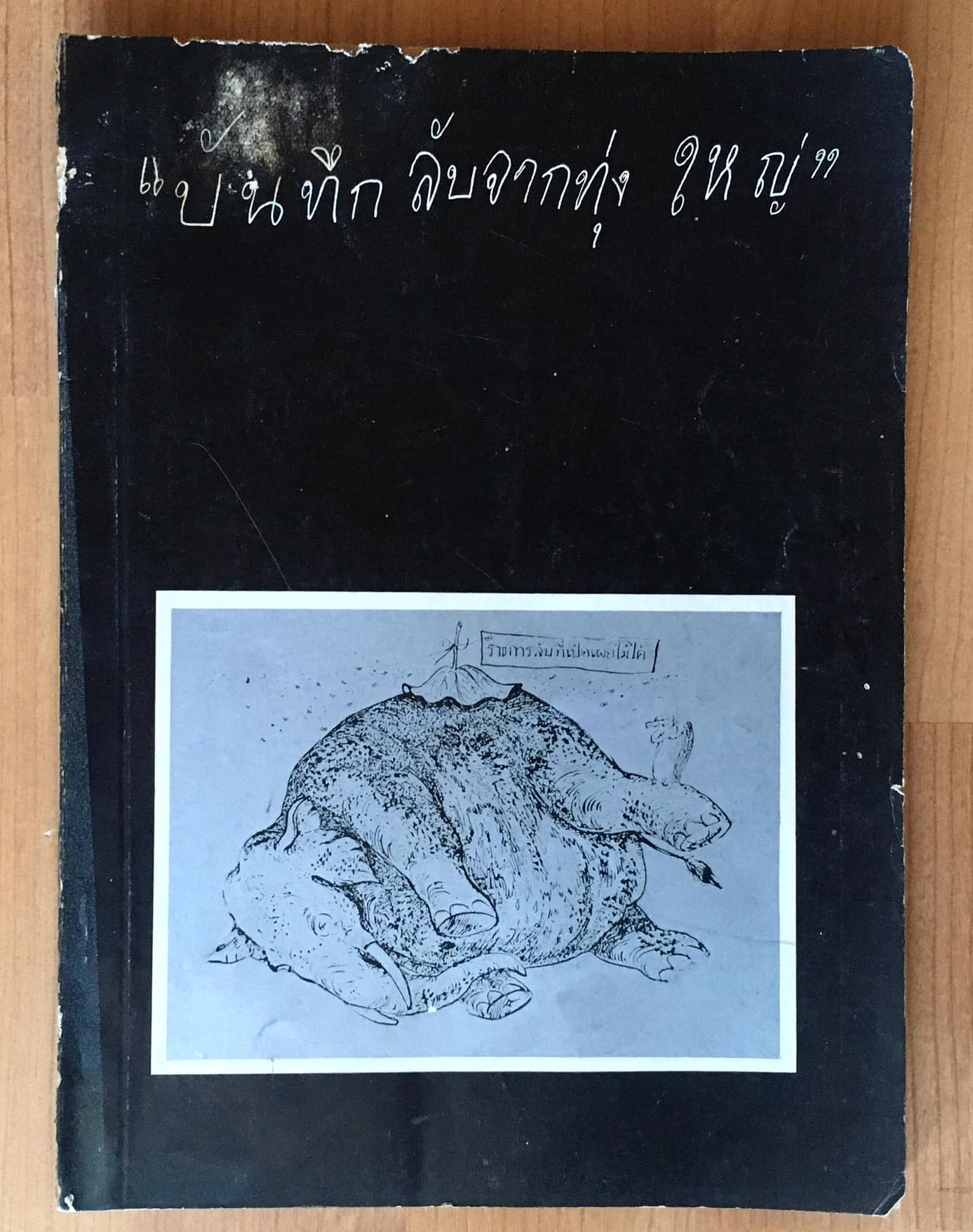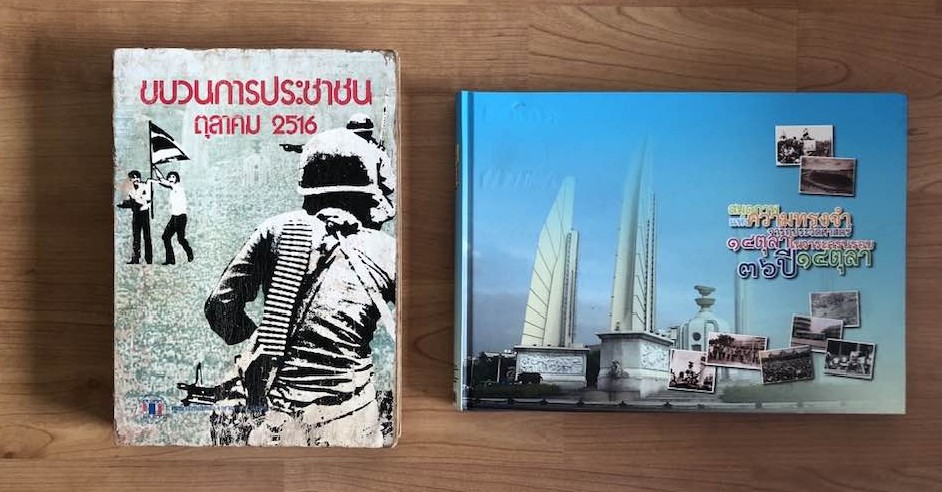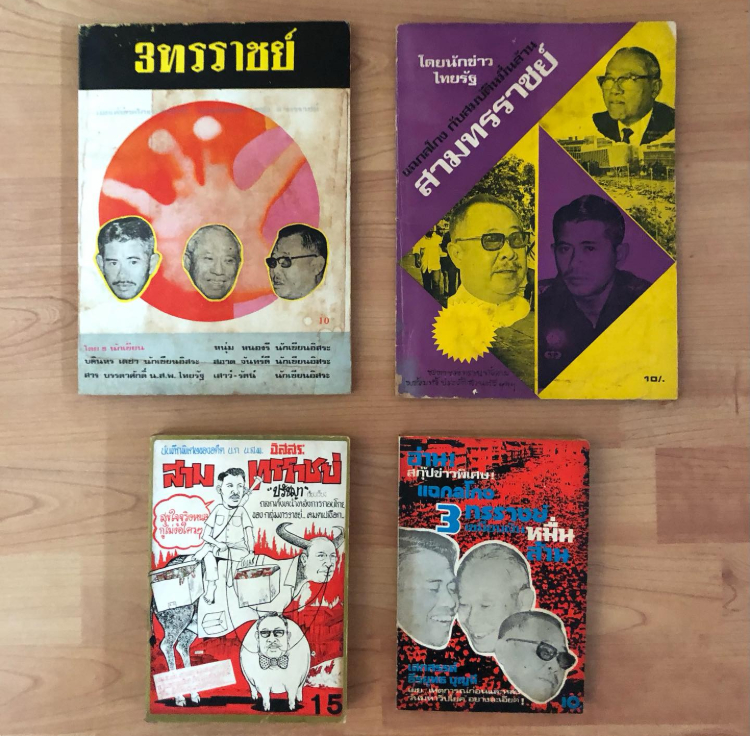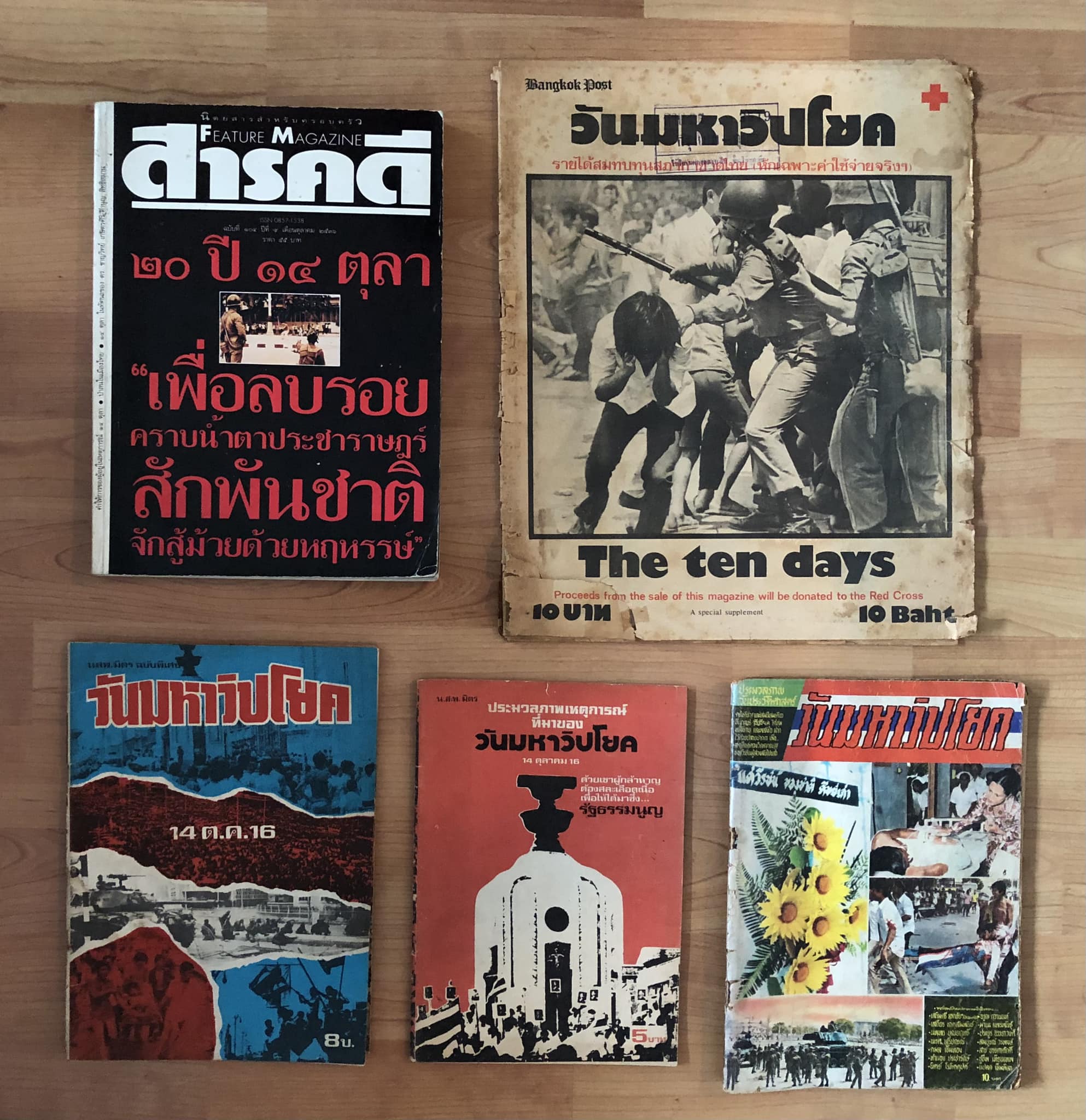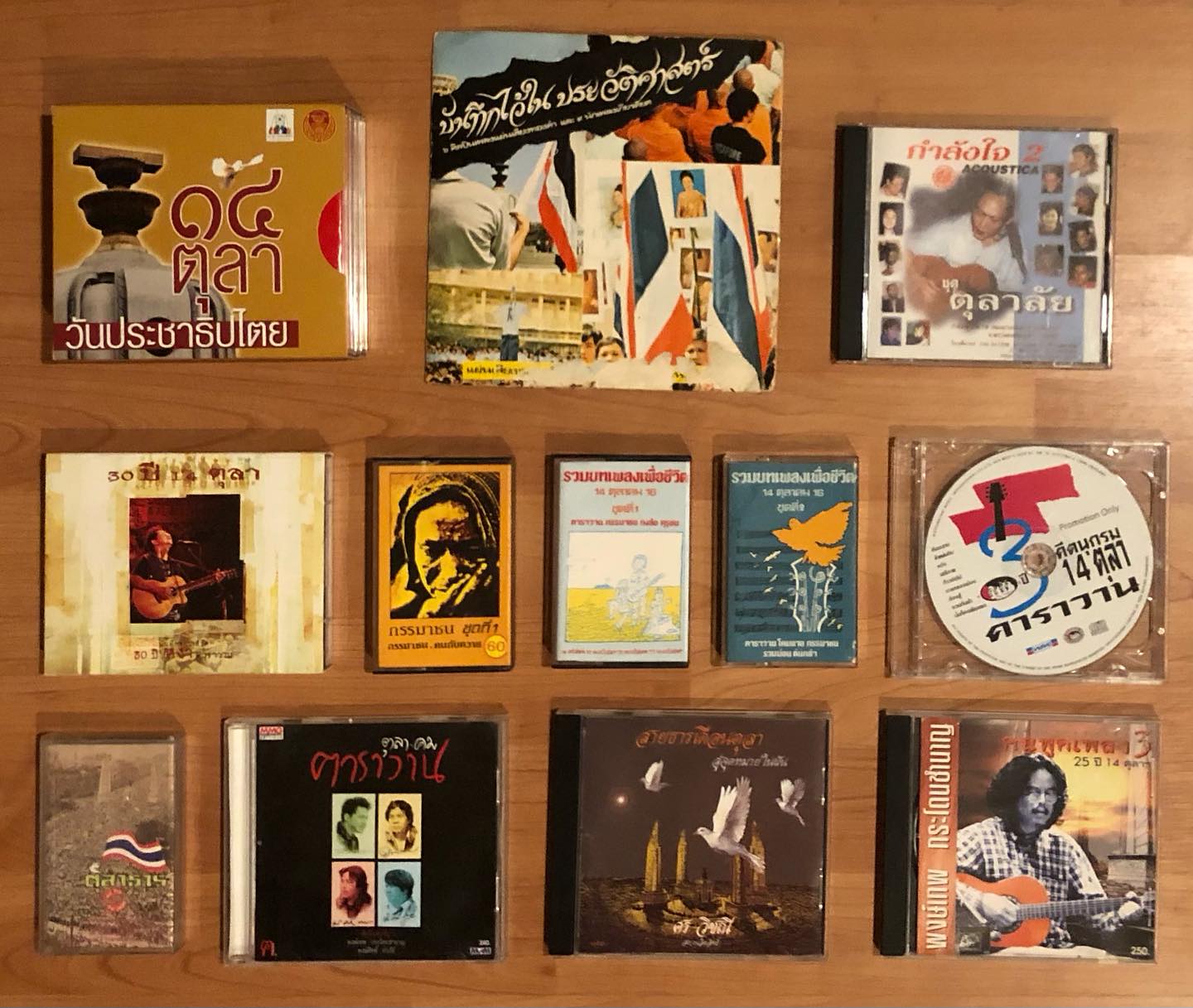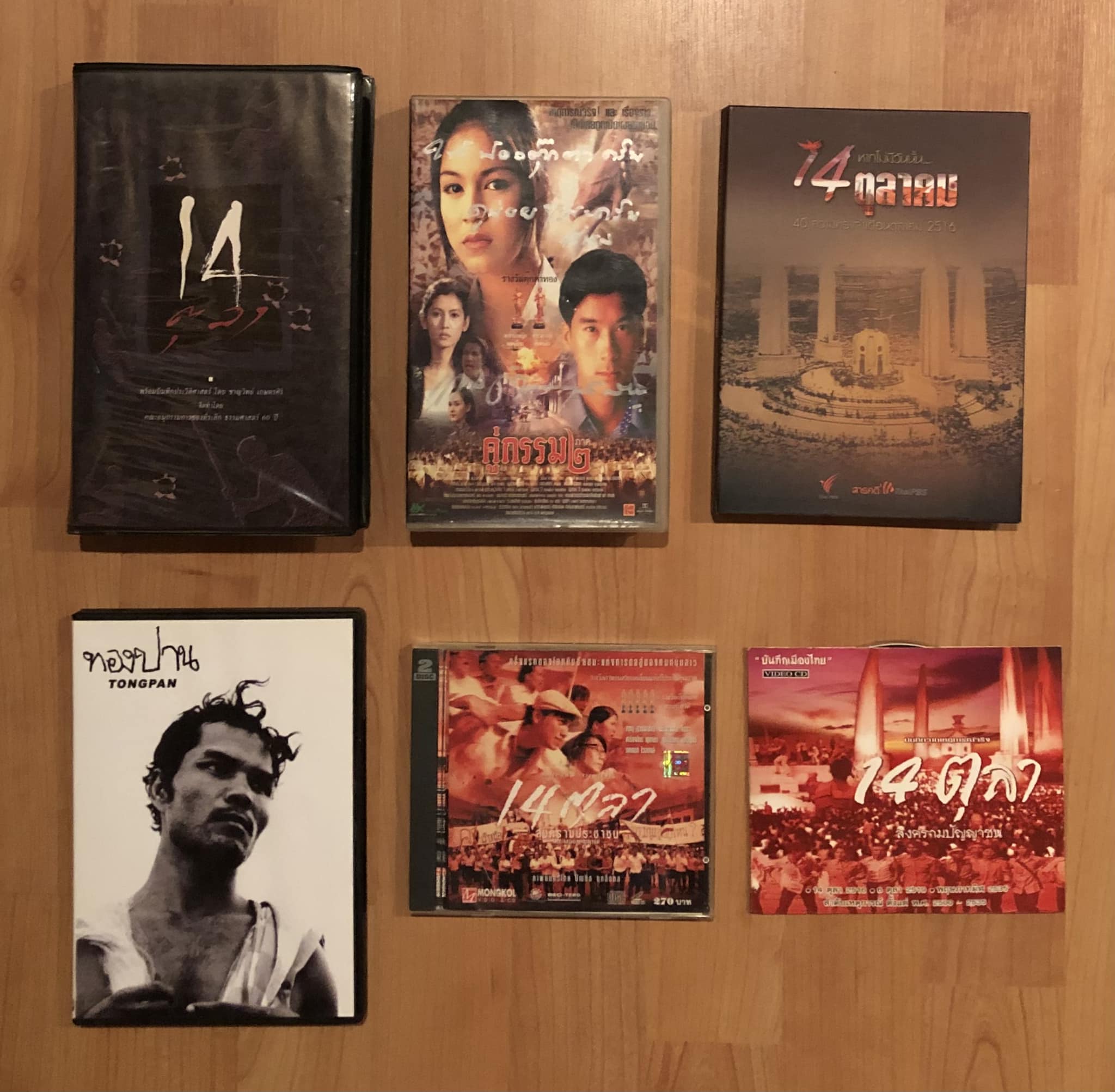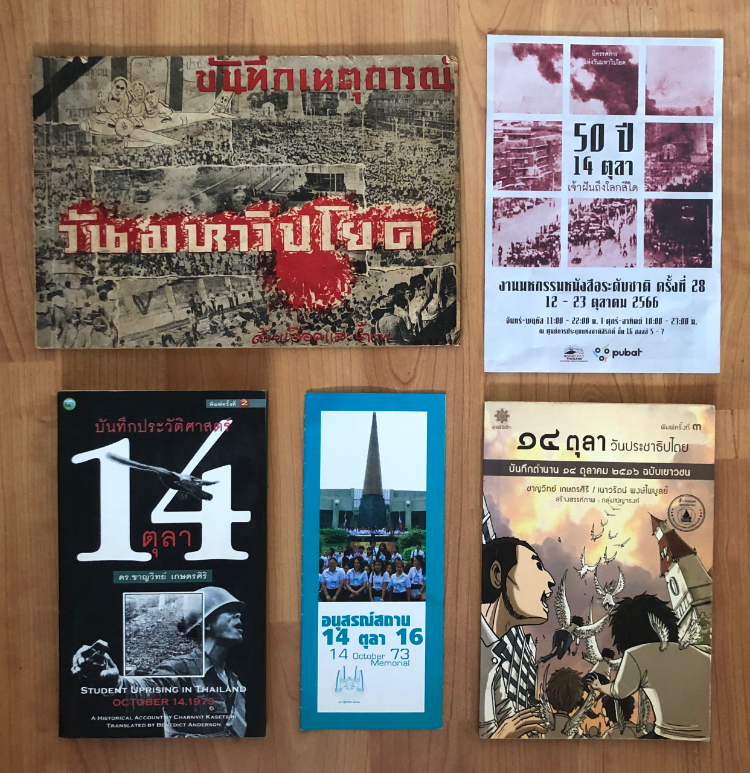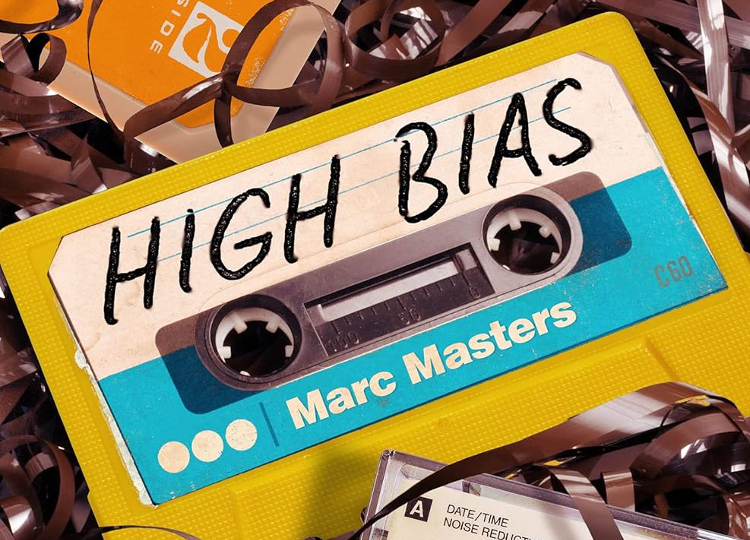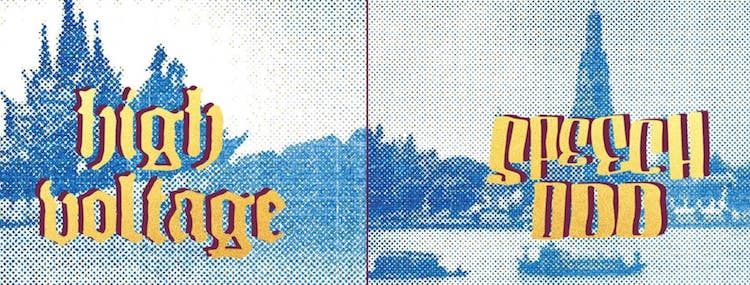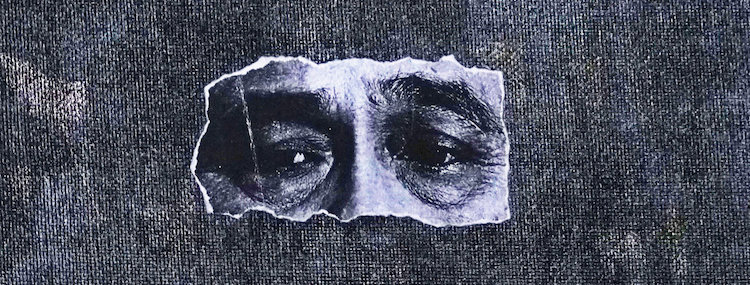One way that artists satirise Thai politics is by punning on the Thai word for democracy itself. The earliest and most common example is ‘democrazy’, highlighting the craziness of the Thai political system, which dates back thirty years. Since then, there have been more than a dozen other Thai puns on ‘democracy’.
Democrazy
The band Heavy Mod released their album
Democrazy on cassette and CD in 1995. (Its Thai title was ประชาธิปไตย, which translates simply as ‘democracy’.) The 25 Stang released an album with the same name in 2006.
Democrazy was also the title of a single by another band,
Dogwhine, from their EP
Dog of God, released on CD in 2019. The animated music video for the song features the folding chair and hanging corpse from an infamous
Neal Ulevich photograph.
Democrazy (ประชาธิปไทย) is also the title of a 2020 painting by Luck Maisalee.
The fashion brand Russian Roulette designed a
Demo-crazy t-shirt in 2023.
Bangkok Democrazy was the strapline of the 4th Bangkok Experimental Film Festival, which took place in 2004. Democrazy Theatre Studio was founded by Pavinee Samakkabutr and Thanapol Virulhakul in 2008, and the edgy Bangkok performance venue closed down in 2019. DemoCrazy! is also the name of a new coffee shop in Chiang Mai.
Thunsita Yanuprom and Sarun Channiam directed the short film
Democrazy.mov in 2019. In the film, a cellphone signal is jammed by a 44GHz frequency, in reference to
article 44 of the interim constitution, which granted absolute power to the leaders of
the 2014 coup.


Demockcrazy
Duangporn Pakavirojkul directed the short film
Demockrazy (ประชาทิปตาย) in 2007. The film was an immediate reaction to
the 2006 coup: set in a classroom, an authoritarian teacher symbolises the coup leaders. Its title is a clever double pun on ‘crazy’ and ‘mockery’.
Demoncrazy
Ready Myth Demoncrazy was a retrospective exhibition of art by Panya Vijinthanasarn, held in 2018. Similarly, the fashion brand Plus One designed a Demo(n)cracy hat in 2023.
Dreamocracy
Parit Wacharasindhu’s book
Dreamocracy (ประชาธิปไตยไม่ใช่ฝัน) was published in 2022. Parit is a
People’s Party MP, and his book is a personal manifesto proposing solutions to the country’s social and economic problems.
Drunkmocracy
Warat Bureephakdee directed the short film Drunkmocracy (สุราธิปไตย) in 2023. A documentary on Thai alcohol laws, it was released online as part of the ไทยถาม (‘Thailand questions’) series by Thai Rath (ไทยรัฐ).
Hydrocracy
This year, Natthapon Sangkam directed the short film Hydrocracy, a dystopian drama in which a young man escapes from state-appointed snipers. The protagonist discovers that the population is being controlled via drinking water containing chemicals that react to sound waves transmitted by the government.
ประชาฉิปตาย
The song title ประชาฉิปตาย translates as ‘democracy dies’, in a particularly effective Thai-language pun. (‘Democracy’ and ‘die-ocracy’ are near-homophones in Thai.) The track is featured on the Heavy Mod album
Democrazy, and it’s similar to
Die mo cracy, a slogan on a t-shirt sold by the band
Speech Odd last year. Also, students from Naresuan University Demonstration School staged a play titled
Diemocracy (ประชาธิปตาย) in 2023; its Thai title was the same as a single from that year by Skipdown, though the song’s English title was
Dead Mock Cracy.
Paradoxocracy
‘Happy-ocracy’
Ing K.’s film
Shakespeare Must Die (เชคสเปียร์ต้องตาย) includes a satirical parody of authoritarian propaganda: “Dear Leader brings happy-ocracy!” The line turned out to be a remarkably prescient prediction, as coup leader Prayut Chan-o-cha released a propaganda song titled
Returning Happiness to the Thai Kingdom (คืนความสุขให้ประเทศไทย) in 2014. (Ing discussed the film in
Thai Cinema Uncensored.)
PrachathipaType
The design studio
PrachathipaType (ประชาธิปไทป์) was founded in 2020, and its name translates as ‘democratic typography’. The anonymous designer behind PrachathipaType also created a new typeface, PrachathipaTape (ประชาธิปะเทป), for Rap Against Dictatorship’s music video
Homeland (บ้านเกิดเมืองนอน).
‘ประชาธิปตู่’
Yuthlert Sippapak’s film
Nednary (อวสานเนตรนารี) features a pun on Prayut’s nickname, Tu. When a boy scout, with the same nickname as Prayut, is asked what type of democracy he wants, he replies: “ประชาธิปตู่” (‘Tu-ocracy’). (Yuthlert discussed the film in
Thai Cinema Uncensored.) The period of undemocratic military government led by Prayut between 2014 and 2023 is known as ‘Prayutocracy’.
‘Thaksinocracy’
Thaksinocracy (ทักษิณาธิปไตย) describes the populist politics of Thaksin Shinawatra, prime minister from 2001 to 2006. (A slight variation, สู่ทักษิณาธิปไตย, was translated as Thaksinomics, the title of a book by Rangsan Thanapornpun published in 2005.) The journal Same Sky (ฟ้าเดียวกัน; vol. 13, no. 3) described Thailand as a ‘technocracy’ (ระบอบเทคโนแครต) due to Thaksin’s political influence.
‘Kukritocracy’
Kukritocracy, a term coined by Tamara Loos, describes the cultural role of royalist author Kukrit Pramoj during the Cold War. Loos will give a presentation titled
Kukritocracy at the Center for Southeast Asian Studies, University of Wisconsin–Madison, on 21st February, as part of their
Friday Forum series. (
I gave a Friday Forum presentation in 2021.)
‘Premocracy’
Premocracy (เปรมาธิปไตย) describes the period of quasi-democracy from 1980 to 1988, when Prem Tinsulanonda led the government as an appointed prime minister. เปรมาธิปไตย is also the title of a book by Adinan Phromphananjal, published in 2020.
‘Coupocracy’
In her book Dictatorship on Trial, released last year, Tyrell Haberkorn coined the term ‘coupocracy’ to describe the period covering the 2006 and 2014 coups.
‘Militocracy’
Surachart Bamrungsuk’s book Militocracy (เสนาธิปไตย), published in 2015, discussed the regular coups that have cemented the military’s role in Thai politics.
‘Dancemocracy’
The new book
Made in Thailand includes Anna Lawattanatrakul’s essay
Dancemocracy as Political Expression in the 2020 Thai Pro-democracy Movement, a reference to the Dancemocracy (คณะราษแดนซ์) troupe of pro-democracy dancers and protesters. (
Made in Thailand, edited by Viriya Sawangchot, also includes an interview with Pisitakun Kuantalaeng, who discusses his album
Absolute Coup.)



